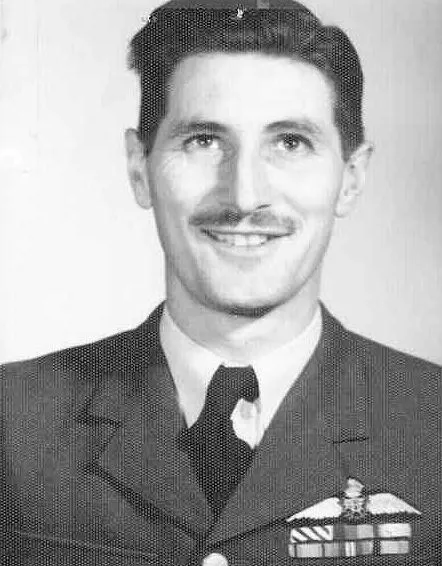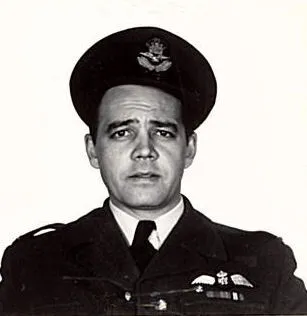Loewen, Victor John (Flying Officer)
Killed in Flying Accident 1954-August-12
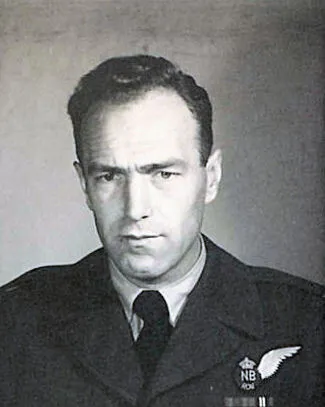

Birth Date: 1920-September-19
Born: Onepropetrovsk, Russian Federation
Parents: Son of John Henry and Katherine (ne Martens) Loewen of Saskatoon, Saskatchewan.
Spouse: Husband of Hedwig (Hedie) (nee Thiessen) Loewen of Saskatoon, Saskatchewan and father of Victor and Judith Loewen. Broth
Home: Onepropetrovsk, Russian Federation
Enlistment: Saskatoon, Saskatchewan
Enlistment Date: 1942-March-08
Service
RCAF
Unit
406 Sqn- Squadron
We Kill By Night
Base
Rank
Flying Officer
Position
Navigator
Service Numbers
70168
Crew or Other Personnel
Mitchell HD331
Mitchell serial: HD331
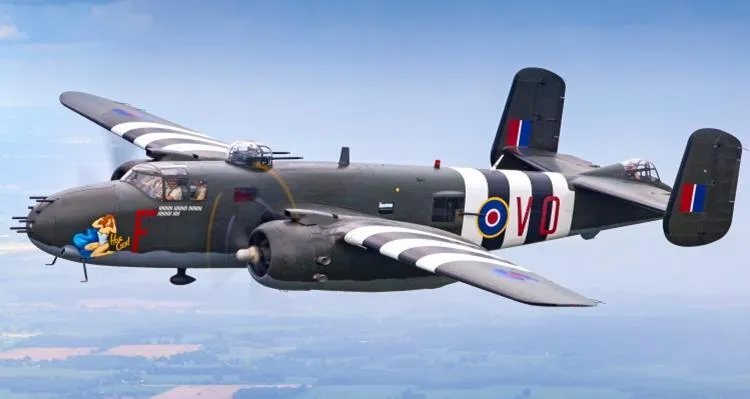
Canadian Warplane Heritage Museum
The North American B-25 Mitchell is an American medium bomber that was introduced in 1941 and named in honor of Major General William "Billy" Mitchell, a pioneer of U.S. military aviation. Used by many Allied air forces, the B-25 served in every theater of World War II, and after the war ended, many remained in service, operating across four decades. Produced in numerous variants, nearly 10,000 B-25s were built.
The North American B-25 Mitchell was flown by the RCAF during and after the Second World War. The RCAF flew the B-25 Mitchell for training during the war and continued flying operations after the war, in Canada with most of 162 Mitchells received. The first B-25s had originally been diverted to Canada from RAF orders. These included one Mitchell Mk. I, 42 Mitchell Mk. IIs, and 19 Mitchell Mk. IIIs. No 13 (P) Squadron was formed unofficially at RCAF Station Rockcliffe in May 1944 and flew Mitchell Mk. IIs on high-altitude aerial photography sorties. No. 5 OTU (Operational Training Unit) at Boundary Bay, British Columbia and Abbotsford, British Columbia, operated the B-25D Mitchell in a training role together with B-24 Liberators for Heavy Conversion as part of the BCATP. The RCAF retained the Mitchell until October 1963.
No. 418 (Auxiliary) Squadron received its first Mitchell Mk. IIs in January 1947. It was followed by No. 406 (Auxiliary), which flew Mitchell Mk. IIs and Mk. IIIs from April 1947 to June 1958. No. 418 Operated a mix of Mk. IIs and Mk. IIIs until March 1958. No. 12 Squadron of Air Transport Command also flew Mitchell Mk. IIIs along with other types from September 1956 to November 1960. In 1951, the RCAF received an additional 75 B-25Js from USAF stocks to make up for attrition and to equip various second-line units.. Wikipedia and Harold Skaarup web page
Unit Desciption
406 Sqn We Kill By Night ("Lynx")
History of the Squadron during World War II (Aircraft: Blenheim I & IV, Beaufighter IIF & VIF, Mosquito XII & XXX)
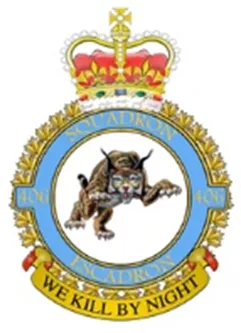
The Squadron was formed at Acklington, Northumberland, UK ![]() on May 10, 1941 as the RCAF's 5th squadron formed overseas, as a night-fighter unit. It flew Blenheim, Beaufighter and Mosquito aircraft in the night air defence of Great Britain role, before being re-designated as an Intruder squadron in November 1944. It was listed as the top scoring RAF/RCAF Intruder unit for the period November 27 1944 until the end of WWII. The squadron was disbanded at Predannack, Cornwall, UK
on May 10, 1941 as the RCAF's 5th squadron formed overseas, as a night-fighter unit. It flew Blenheim, Beaufighter and Mosquito aircraft in the night air defence of Great Britain role, before being re-designated as an Intruder squadron in November 1944. It was listed as the top scoring RAF/RCAF Intruder unit for the period November 27 1944 until the end of WWII. The squadron was disbanded at Predannack, Cornwall, UK ![]() on Sep 1, 1945.
on Sep 1, 1945.
Overall, the squadron claimed 64 enemy aircraft destroyed, 7 probables and 47 damaged. Also claimed were 88 locomotives and many other vehicles. Squadron operational losses were 11 aircraft, 20 aircrew killed or missing and 2 POWs. The squadron personnel were awarded 3 DSOs, 1 second Bar to DFC, 1 Bar to DFC, 14 DFCs, 2 DFMs and 4 Mentioned in Dispatches. Battle Honours were: Defence of Britain 1941-45, English Channel and North Sea 1944, Fortress Europe 1943-44, France and Germany 1944-45: Biscay Ports 1944, Normandy 1944, Rhine: Biscay 1944.Wikipedia, Kostenuk and Griffin
Maps for Movements of 406 Squadron 1941-45
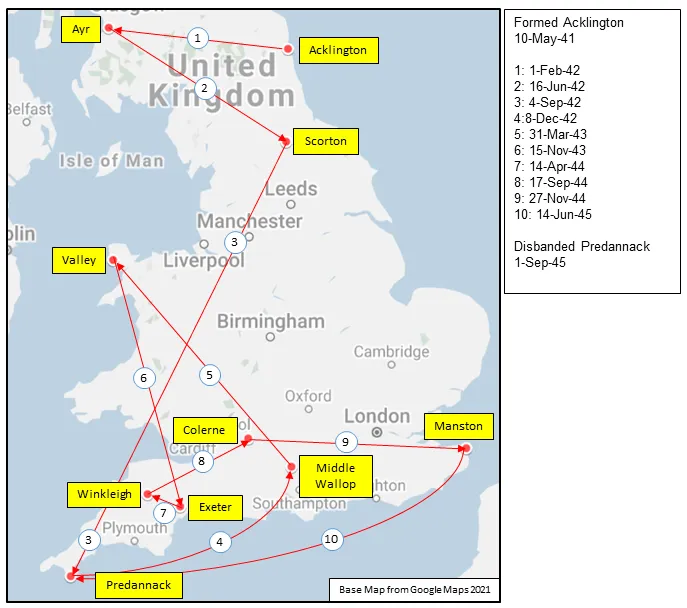
406 Sqn History Summary 1941-45
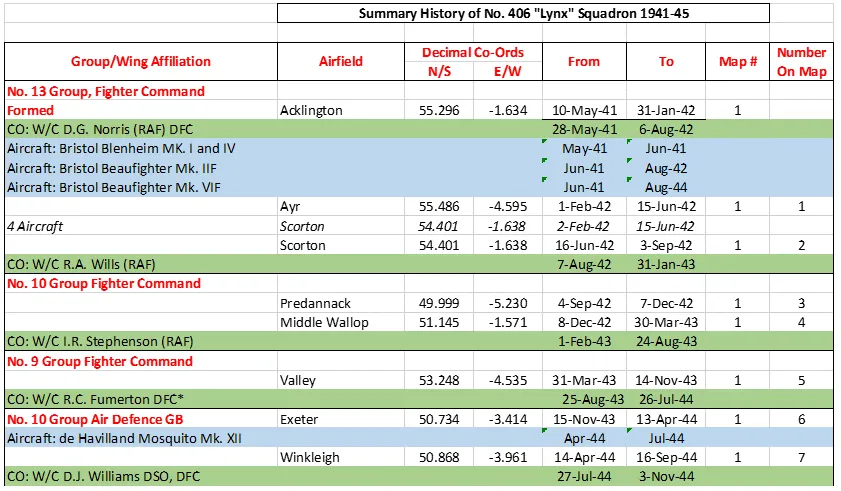
406 Sqn History Summary 1941-45 Page 2

History of the Squadron Post-WWII (Aircraft: Harvard II, Mitchell III, Silver Star, Expeditor, Otter, Sea King, Tracker, Cyclone)
The unit was re-formed as a reserve unit, 406 Tactical Bomber Squadron (Auxiliary) on 1 April 1947 at RCAF Station Saskatoon ![]() . It flew B-25 Mitchell III light bombers, and also Harvard and T-33 Silver Star aircraft for army co-operation duties. It was re-designated 406 (Light Bomber) Squadron on 1 April 1949 and adopted the title City of Saskatoon in September 1952. In March 1958 under the name 406 Squadron, it was re-equipped with C-45 Expeditor and later CSR-123 Otter aircraft, and assigned to a light transport and emergency rescue role. The squadron was disbanded again on 1 April 1964 as a result of the reduction of the Auxiliary Force.
. It flew B-25 Mitchell III light bombers, and also Harvard and T-33 Silver Star aircraft for army co-operation duties. It was re-designated 406 (Light Bomber) Squadron on 1 April 1949 and adopted the title City of Saskatoon in September 1952. In March 1958 under the name 406 Squadron, it was re-equipped with C-45 Expeditor and later CSR-123 Otter aircraft, and assigned to a light transport and emergency rescue role. The squadron was disbanded again on 1 April 1964 as a result of the reduction of the Auxiliary Force.
The squadron was re-formed for a third time at CFB Shearwater, Nova Scotia ![]() on 12 July 1972 as the 406 Maritime Operational Training Squadron, operating the CH-124 Sea King helicopter and the CP-121 Tracker ASW aircraft. In mid-1981, the operational Tracker squadron, 880 Maritime Reconnaissance Squadron, was transferred CFB Summerside, which left 406 Squadron only responsible for Sea King training. At the present time, the squadron trains pilots, Air Combat Systems Officers (ACSOs), and Airborne Electronic Sensor Operators (AES Ops) on the CH-148 Cyclone aircraft and flight operations relevant to the Maritime Helicopter (MH) role. In addition, the Squadron’s Technical Training Flight conducts a wide range of avionics and aviation courses for Cyclone technicians, as well as specialty maintenance courses. On an annual basis, between 200 and 300 students graduate from 406 Squadron. The squadron’s partner squadrons 423 Squadron in Shearwater, N.S., and 443 Squadron in Patricia Bay, B.C., employ 406 Squadron Cyclone graduates as integral members of helicopter air detachments aboard Her Majesty’s Canadian ships.
on 12 July 1972 as the 406 Maritime Operational Training Squadron, operating the CH-124 Sea King helicopter and the CP-121 Tracker ASW aircraft. In mid-1981, the operational Tracker squadron, 880 Maritime Reconnaissance Squadron, was transferred CFB Summerside, which left 406 Squadron only responsible for Sea King training. At the present time, the squadron trains pilots, Air Combat Systems Officers (ACSOs), and Airborne Electronic Sensor Operators (AES Ops) on the CH-148 Cyclone aircraft and flight operations relevant to the Maritime Helicopter (MH) role. In addition, the Squadron’s Technical Training Flight conducts a wide range of avionics and aviation courses for Cyclone technicians, as well as specialty maintenance courses. On an annual basis, between 200 and 300 students graduate from 406 Squadron. The squadron’s partner squadrons 423 Squadron in Shearwater, N.S., and 443 Squadron in Patricia Bay, B.C., employ 406 Squadron Cyclone graduates as integral members of helicopter air detachments aboard Her Majesty’s Canadian ships.
